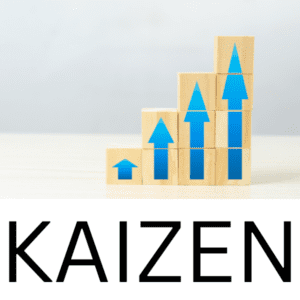
Contents
ToggleIntroduction
As a leader, you’re entrusted with the responsibility of steering your team toward success. In this pursuit, encountering challenges and problems is inevitable. However, the key to sustained success lies not just in addressing these problems but in understanding and eliminating their root causes. This is where the art of Root Cause Analysis (RCA) comes into play. In this blog post, we’ll delve into the significance of RCA for leaders and explore how mastering this technique can lead to more effective problem-solving and lasting results.
The Essence of Root Cause Analysis
Root Cause Analysis is a systematic process of identifying the underlying factors that contribute to an issue. It goes beyond addressing surface-level symptoms to tackle the fundamental reasons behind a problem. As a leader, adopting RCA enables you to move from reactive to proactive problem-solving, thus preventing recurrence and fostering a culture of continuous improvement.Root Cause Analysis (RCA) stands as a structured and methodical approach, meticulously designed to unveil the intricate web of factors that collectively give rise to an issue. It transcends the mere superficial examination of apparent symptoms, delving deep into the intricate layers of causality to expose the very bedrock of a problem. Operating as a beacon for leaders, the adoption of RCA signifies a paradigm shift from a reactive stance to an empowered proactive stance in the realm of problem-solving.
Within the realm of RCA, the pursuit is not limited to scratching the surface; rather, it involves peeling back the layers of complexity until the core influencers are laid bare. It’s akin to a detective’s pursuit of truth, where each element is meticulously examined to reconstruct the sequence of events that led to the issue’s manifestation. This meticulous inquiry paves the way to comprehend not only what transpired, but more crucially, why it transpired.
For leaders who embrace RCA, the transformational effects are manifold. No longer confined to addressing the immediate and apparent, they are equipped to probe beneath the surface and address the fundamental underpinnings. By doing so, they not only resolve the immediate predicament but also avert its recurrence, erecting barriers against the repetition of the same issue. The very essence of a proactive approach lies in preempting challenges before they arise, and RCA arms leaders with this foresight.
As an embodiment of foresight, RCA is not just a tool but a catalyst for cultural evolution. When leaders adopt this approach, it infuses an organization with a spirit of relentless improvement. The practice of RCA cascades down to every level, creating a culture where problems are not seen as roadblocks but as opportunities for enhancement. The ethos of continuous improvement is imbibed into the very fabric of the organization, fostering an environment where each challenge met is a stepping stone to becoming better, stronger, and more efficient.
In the grand tapestry of leadership, Root Cause Analysis assumes a pivotal role. It empowers leaders to transcend the reactive limitations and instead become architects of solutions, orchestrating a symphony of insights that harmonize to reveal the profound “whys” underlying any problem. Through RCA, leaders forge a path towards sustainable progress, where obstacles are understood, dismantled, and transformed into milestones of growth. It’s not merely about addressing the symptoms, but about orchestrating the transformation that turns problems into opportunities, and opportunities into advancements.
Why is Root Cause Analysis Crucial for Leaders?
- Sustainable Solutions:
Merely tending to the surface-level manifestations of a predicament might offer a fleeting respite, akin to placing a band-aid on a wound without attending to its underlying cause. Such a remedy, while momentarily soothing, remains vulnerable to the relentless march of time and circumstances, poised to unravel at the first sign of strain. It is in this precarious realm that the true potency of Root Cause Analysis (RCA) comes to light, unfurling as a beacon of wisdom and prudence for leaders who seek to transcend the boundaries of quick fixes.
RCA, in its essence, is the architect’s blueprint for transformation. It guides leaders beyond the immediate realm of symptoms, directing their focus to the very foundations upon which issues are erected. It is akin to plumbing the depths of a labyrinth to trace the original thread that led to its intricate design, and with every discovery, shedding light on the intricacies that gave birth to the dilemma at hand.
Embracing RCA ushers leaders into a realm of empowerment, enabling them to envision remedies that possess longevity and permanence. By addressing the core genesis of a problem, leaders orchestrate a transformational shift that resonates far beyond the present moment. The actions taken are akin to strengthening a foundation, ensuring that the structure it supports stands resilient against the tests of time.
Incorporating RCA as a cornerstone of leadership philosophy, leaders forge the path towards solutions that are not constrained by the myopia of immediacy. Instead, they delve into the depths of analysis and insight, deciphering the intricate interplay of factors that coalesce into challenges. This analytical journey culminates in a synthesis of understanding, wherein leaders are armed not only with the knowledge of what transpired, but with the deeper comprehension of why it happened.
As leaders infuse RCA into their problem-solving repertoire, they traverse from the realm of short-lived fixes to the domain of enduring change. The ripple effects of this transformation are profound, reverberating through the fabric of an organization’s culture. The recurrence of issues, once a frequent specter, diminishes in the face of the proactive solutions wrought by RCA. With each application, leaders pave the way for a culture that views problems not as nuisances, but as opportunities for growth and enhancement.
In the grand narrative of leadership, the embrace of RCA signals a profound shift in perspective. It is a testament to the foresight and wisdom that leaders employ, acknowledging that the seeds of enduring change lie in uprooting the weeds of the root cause. By doing so, leaders cement their role as architects of progress, crafting a legacy built upon solutions that stand resilient against the tests of time, thereby steering their organizations towards a horizon imbued with the promise of sustained success.
2. Resource Optimization:
Time and resources, the lifeblood of any organization, flow with a precious and finite rhythm. In the orchestration of tasks, the pursuit of objectives, and the cultivation of growth, these commodities hold a paramount significance. Yet, within the tapestry of organizational dynamics, the insidious specter of frequent firefighting can emerge, a relentless devourer of these valuable assets. It is in this intricate interplay that the art of Root Cause Analysis (RCA) reveals itself as an instrument of strategic preservation and a gateway to a more judicious allocation of these limited treasures.
In the realm of organizational endeavors, frequent firefighting stands as a formidable adversary to progress. It emerges as the embodiment of urgency, forcing immediate attention to the surface-level flames that threaten to engulf operational landscapes. However, this very urgency blinds the organization to the deeper narrative, causing it to operate in perpetual reaction mode, constantly attending to the symptoms while neglecting the ailment’s root. Such an existence drains the reservoirs of time and resources, leaving behind a trail of missed opportunities and deferred aspirations.
RCA, as the harbinger of clarity, stands poised to reverse this course. By investing the time required to excavate the origins of problems, leaders unveil the underlying mechanics that propel these challenges into existence. This holistic perspective shifts the narrative from mere firefighting to strategic problem-solving, enabling leaders to enact solutions that strike at the core of issues. As a consequence, the ceaseless cycle of surface-level crisis management is supplanted by a paradigm of enduring solutions, diminishing the constant drain on time and resources.
The correlation between investing in RCA and safeguarding long-term resources is akin to a wise investor who, through meticulous analysis, identifies opportunities that promise sustained returns. Each moment spent delving into the root cause aligns with a future of preserved resources that would otherwise have been spent in perpetuating the cycle of reactive measures. This is a transformation that transcends the tactical, evolving into a strategic assertion of stewardship over an organization’s most precious commodities.
The dividends of such an investment in RCA are manifold. As leaders channel their efforts into understanding the intricate web of causality behind challenges, they unfurl a map that guides them towards more effective and lasting solutions. The ripple effects cascade through the organization, reshaping the cultural landscape from one of hurried response to one of proactive foresight. This shift in mindset ensures that the wellsprings of time and resources are conserved for pursuits that contribute to the organization’s growth, innovation, and the realization of strategic ambitions.
In the grand chronicle of organizational leadership, the embrace of RCA emerges as a testament to sagacity and prudence. It is a pledge to trade the allure of quick fixes for the rewards of sustainable progress. By delving into the depths of causality, leaders don the mantle of navigators, steering their organizations away from the treacherous currents of firefighting and into the steady waters of strategic advancement. This commitment not only safeguards the temporal and material treasures within an organization’s grasp but also nurtures a legacy of proactive ingenuity and transformative leadership.
3. Improved Decision-Making:
Unlocking the intricacies of a problem’s root causes unveils a hidden world of connections and dynamics that operate within the organizational fabric. This profound understanding transcends the mere surface-level presentation of challenges, akin to unraveling the intricate threads of a complex tapestry to comprehend the masterpiece beneath. Within this nexus of causality lies the potential to empower leaders with a wealth of discernment, offering a panoramic view of interactions that guide decisions, shape resource allocation, and catalyze the refinement of processes.
The journey to comprehend root causes is akin to embarking on an expedition into the uncharted territories of cause and effect. As leaders delve into the heart of a problem, they trace the lineage of influences that have woven themselves into the issue’s fabric. This journey of exploration is not linear but rather a multidimensional exploration, revealing the crossroads where variables intersect, the points of friction where issues arise, and the interconnected web of factors that collectively contribute to the observed outcome.
With this newfound knowledge, leaders emerge as architects of informed decisions. The insights gained from unearthing root causes illuminate the intricate levers that, when manipulated, can steer the course of an organization towards its intended goals. The decision-making process transcends the realm of conjecture, propelled by the fuel of empirical understanding. Each choice is founded not only on immediate needs but also on a profound comprehension of the broader consequences that ripple across the organization’s landscape.
Moreover, the understanding of root causes serves as a compass guiding the allocation of resources. It is a strategic tool that enables leaders to invest their most precious assets—time, manpower, and funds—where they are most needed and most impactful. The awareness of underlying dynamics aids in prioritizing initiatives that strike at the core of issues, thus avoiding the pitfalls of allocating resources to superficial remedies that fail to address the crux of challenges.
Optimizing processes becomes an endeavor suffused with precision and clarity. Armed with the insights garnered from delving into root causes, leaders can embark on a journey of process refinement that is both informed and purposeful. Each step becomes a calculated move towards greater efficiency and effectiveness, with the assurance that changes are not just superficial alterations but transformations that resonate at the foundational level.
In the symphony of leadership, the understanding of root causes emerges as the conductor’s baton, guiding the orchestra towards harmonious outcomes. It is a testament to the wisdom of leaders who recognize that the veil of surface-level appearances is but a veneer, concealing the rich tapestry of connections beneath. As leaders uncover these threads of causality, they equip themselves with a lens through which to view their organization in all its intricate splendor. This lens, forged by the fires of inquiry, is the catalyst that ignites a cascade of informed decisions, judicious resource allocation, and perpetual process optimization—a symphony of progress that resonates throughout the organizational landscape.
4. Learning and Growth:
Root Cause Analysis (RCA) is not just a tool; it is a catalyst for transformation that permeates the very fabric of an organization’s culture. At its core lies the power to nurture a learning culture, an ecosystem where knowledge thrives and growth is synonymous with progress. This transformation is not confined to the methodical unraveling of challenges; it extends to the very attitude with which teams approach setbacks, forging an environment where open discussions about root causes foster resilience, innovation, and a profound shift in perspective.
The cornerstone of a learning culture is the willingness to embrace experiences, even when they encompass challenges and mistakes. RCA, as the bridge to understanding these experiences, has the power to redefine how errors are perceived within teams. Traditionally, mistakes have often been cast in the shadow of blame, an atmosphere that breeds fear and stifles creativity. However, RCA’s emergence on the scene alters this narrative, painting mistakes as a treasure trove of insights waiting to be uncovered.
Open discussions about root causes become a portal to transformation. When team members gather around the table to dissect the layers of causality, they embark on a journey of collective discovery. Rather than pointing fingers, they collaborate to unearth the factors that led to the issue. This collaborative inquiry dismantles the barriers of blame and shame, replacing them with an atmosphere of shared responsibility and a collective commitment to growth.
By embracing mistakes as opportunities for growth, RCA encourages teams to view setbacks through a lens of curiosity and improvement. Each challenge becomes a stepping stone, an invaluable resource for honing skills, refining processes, and enhancing outcomes. This paradigm shift cultivates a dynamic where innovation flourishes, as the pursuit of understanding leads to ingenious solutions that ripple across the organization.
Furthermore, the learning culture nurtured by RCA extends its tendrils into the future. As teams become attuned to the process of root cause analysis, they become equipped to preempt challenges, anticipating and averting issues before they materialize. This proactivity is a testament to the cultural metamorphosis that RCA instigates—an evolution from reactive firefighting to proactive innovation.
In the broader spectrum of leadership, the transformation inspired by RCA is nothing short of a masterpiece. Leaders who foster a learning culture through RCA steer their teams away from the limitations of the past and towards the limitless potential of the future. They create an environment where each voice is valued, each experience is a teacher, and each challenge is an opportunity. By weaving RCA into the very fabric of their organization, leaders become architects of growth, crafting a legacy of resilience, collaboration, and unwavering dedication to progress.
Visit TSL Shop!
-
 Select options This product has multiple variants. The options may be chosen on the product pageQuick View
Select options This product has multiple variants. The options may be chosen on the product pageQuick View
Steps to Mastering Root Cause Analysis
- Define the Problem:
At the heart of effective problem-solving lies the art of clear articulation—an art that encompasses more than just words, but a comprehensive understanding that reverberates through the fabric of your team or organization. It is the cornerstone upon which successful solutions are constructed, requiring a meticulous exploration of symptoms, an appraisal of their impact, and a visionary grasp of the desired outcome.
The journey begins with a careful examination of symptoms—a process akin to unraveling a complex puzzle. Symptoms, much like clues, offer a glimpse into the enigmatic world of challenges, illuminating the path towards comprehension. By meticulously dissecting these outward manifestations, you lay the groundwork for understanding the underlying dynamics at play. This exploration is not merely about identifying the tip of the iceberg; it is about diving into the depths to unveil the intricate interplay that lies beneath the surface.
Moving beyond symptoms, the spotlight shifts to the intricate dance between challenge and impact. It’s not enough to understand what’s at the surface; one must grasp how these challenges resonate through the intricate web of your team or organization. How do these issues ripple through processes, affect productivity, alter morale, or influence overall goals? It is in this contemplation that you unveil the significance of the problem, transcending isolated instances to perceive the systemic implications.
Yet, clarity is not confined to dissecting the existing landscape; it extends to envisioning the desired horizon. What outcome are you striving for? What transformation do you seek to effect? This visionary perspective is the beacon that guides your endeavors, aligning actions with objectives and illuminating the path towards resolution. This clarity ensures that your efforts aren’t lost in the realm of reactive response, but are instead channeled towards a purposeful alteration of the status quo.
In the grand tapestry of leadership, clear articulation is more than a communication skill; it’s a blueprint for success. By unraveling symptoms, understanding impacts, and defining outcomes, leaders pave the way for effective problem-solving. This process is more than just a linear sequence; it’s a multidimensional exploration that touches upon the analytical, the strategic, and the visionary aspects of leadership. The result is a narrative of informed decisions, strategic alignments, and purposeful progress—a narrative that shapes not only the solutions of today but also the thriving landscapes of tomorrow.
READ MORE.
2. Collect Data:
Gather relevant data and information about the problem. This might include process documentation, performance metrics, employee feedback,
Embarking on the journey of problem-solving entails more than intuition; it demands the navigation of data-driven realms, where insights are drawn from the wellspring of information at your disposal. This information serves as the compass, guiding your decisions through the intricate pathways of challenges. To traverse this landscape, gathering relevant data and information becomes a pivotal step—a process that involves weaving together a tapestry of process documentation, performance metrics, employee feedback, and an array of other pertinent sources.
Process documentation stands as a cornerstone in this endeavor—a written testimony to the intricate choreography that guides your team’s operations. It’s the map that outlines the steps, roles, and interactions that constitute your processes. This documentation encapsulates not only the textbook version but also the idiosyncrasies that evolve over time. It’s a snapshot of how things ought to work, and when compared to reality, it unveils gaps, deviations, and opportunities for enhancement.
Performance metrics lend a numerical perspective to the challenge at hand. They embody the pulse of your organization’s health, offering insights into efficiency, productivity, quality, and more. These metrics, be they quantitative or qualitative, unveil trends, patterns, and anomalies that can illuminate the core of your problem. They serve as a gauge, indicating where things are on track and where interventions are necessary.
Employee feedback, an invaluable asset, introduces the human element to the equation. It’s a tapestry woven from the voices, experiences, and perceptions of those on the front lines. Employees offer insights into pain points, bottlenecks, and potential solutions that might elude more detached perspectives. Their feedback reflects the nuanced intricacies that metrics might not capture, adding depth to your understanding of the challenge.
Beyond these, other pertinent sources might include customer feedback, industry benchmarks, case studies, and expert opinions. Each source brings its unique vantage point, enriching the mosaic of information you’re assembling. This multidimensional approach is akin to seeing a challenge from multiple angles, ensuring a comprehensive grasp of the complexities that define it.
By gathering this diverse array of data and information, leaders transform themselves into informed navigators. They wield knowledge as their compass, charting a course through the uncharted territory of problems. It’s an art of synthesis, where individual pieces of information coalesce into a panoramic view. This process doesn’t just inform decisions; it empowers leaders to be proactive rather than reactive, to anticipate rather than respond, and to engineer solutions that resonate at the heart of the challenge.
In the grand narrative of leadership, gathering data and information is akin to gathering the building blocks of a masterpiece. With each piece in place, leaders paint a picture of understanding that forms the foundation of their strategic decisions. This process breathes life into insights, it transforms intuition into intelligence, and it propels solutions from the realm of possibilities into the realm of probabilities. Ultimately, it’s a testament to the power of information as the fuel that drives the engine of transformation.
and any other pertinent sources.
3. Identify Possible Causes:
Brainstorm potential factors that could contribute to the problem. Use techniques like the “5 Whys” to drill down to deeper layers of cau
In the realm of problem-solving, the art of brainstorming stands as a creative crucible—a space where the collective ingenuity of your team fuses with structured techniques to illuminate potential paths to resolution. It’s a process that goes beyond scratching the surface; it’s a deliberate excavation of possibilities that might hold the keys to unraveling complex challenges. Within this process, techniques like the “5 Whys” emerge as guiding beacons, empowering you to drill down to the bedrock of causality and uncover the intricacies that shape the issue at hand.
To initiate the brainstorming process is to cast a wide net, inviting a spectrum of ideas, perspectives, and hypotheses to converge. These ideas, often seemingly disparate, serve as the raw material from which innovative solutions can be woven. They represent the diverse thoughts that dance on the periphery of the challenge—each holding a clue, an insight, or a fragment that could potentially shed light on the underlying dynamics.
However, it’s not just about generating ideas; it’s about discerning the threads of causality that tie these ideas to the problem. Here, the “5 Whys” technique emerges as a skilled investigator. It’s a relentless inquiry that probes deeper with each iteration, asking why a problem exists, and with each answer, peeling back layers to reveal the deeper influences that conspire to give rise to the issue. This technique dissects the challenge with the precision of a surgeon, seeking to uncover not just the what, but more critically, the why behind the challenge.
Imagine a tree, where each “why” represents a branch, and each branch leads to deeper roots. As you delve further, you uncover not just the symptoms but the systemic factors that have woven themselves into the fabric of your organization. This process bridges the gap between the apparent and the concealed, between the surface and the core. The “5 Whys” technique serves as your spade, unearthing the layers of causality that might remain obscured without deliberate inquiry.
Through the marriage of brainstorming and the “5 Whys,” you create a synergy that is more than the sum of its parts. It’s a dance between creativity and analytical rigor, between open exploration and focused investigation. This dynamic interplay elevates your problem-solving from conjecture to strategy, from fleeting ideas to concrete insights.
In the grand saga of leadership, this process stands as a testament to the power of human thought harnessed by methodical techniques. It’s a narrative of curiosity, exploration, and the relentless pursuit of understanding. As you delve into potential factors and use the “5 Whys” to drill down, you weave a tapestry of insights that not only illuminate the origins of challenges but also pave the way for innovative solutions. It’s an odyssey into the realm of possibility—one that transforms adversity into opportunity and uncertainty into clarity.
sality.
4. Analyze and Prioritize:
As the dust of brainstorming settles, a landscape of potential causes emerges—a terrain rich with insights and possibilities. However, navigating this landscape requires more than intuition; it demands a strategic approach that assesses, sifts, and selects from the array of options. This process of evaluation and ranking is akin to wielding a compass, guiding your attention towards the causes that hold the promise of unveiling the root issue. To achieve this, it’s essential to scrutinize the potential causes, weighing their likelihood and impact, and focusing your energies on those that wield the greatest potential for transformative change.
As you embark on this evaluative journey, the first step is to assess the likelihood of each potential cause. This involves considering the evidence, the context, and the historical patterns that lend credence to each possibility. It’s akin to sifting through the sands of information to find grains of truth that substantiate the role of a particular factor in contributing to the challenge. This assessment is grounded in objectivity, driven by the desire to separate speculation from substantiated hypotheses.
Likewise, the impact of each potential cause is a cardinal consideration. It’s about gauging the magnitude of influence that each factor wields over the challenge. How deeply does it resonate through the organizational fabric? What are the cascading consequences of its existence? This evaluation requires the ability to foresee the ripples that a particular cause might send through the systems and processes, and how these ripples align with the challenge’s overarching context.
Having dissected the puzzle of likelihood and impact, the next step is to merge these dimensions into a matrix of prioritization. Ranking the potential causes involves a synthesis of these two elements, identifying those factors that stand at the crossroads of high likelihood and substantial impact. These are the factors that hold the promise of addressing the root issue—not just alleviating the symptoms, but untangling the underlying mechanics that propel the challenge into existence.
The art of prioritization isn’t merely about numbers; it’s about strategic discernment. It’s about understanding that not all potential causes are equal—that some possess the potency to create seismic shifts, while others might merely offer incremental improvements. It’s about distilling the essence of your challenge, honing your focus on the factors that, when addressed, will unravel the complex tapestry of causality.
In the grand symphony of leadership, the evaluation and ranking of potential causes is a conductor’s role, orchestrating the melody of insights and strategy. It’s a narrative of calculated decision-making, where informed choices emerge as the keystones of progress. By focusing on the causes with the highest potential, leaders transcend the realm of superficial adjustments and immerse themselves in the transformative. They become the architects of solutions that don’t just alleviate the symptoms, but unearth the roots—laying the foundation for sustained growth, innovation, and success.
“Problem-solving becomes a very important part of our makeup as we grow into maturity or move up the corporate ladder.”
-Zig Ziglar
5. Verify the Root Cause:
Dig deeper to validate the identified root cause. Cross-reference with data and seek input from relevant stake
Identifying the root cause is a pivotal milestone in the journey of problem-solving, but it’s a crossroads, not the final destination. The journey doesn’t end with discovery; it evolves into a process of validation—a meticulous journey into the heart of the identified cause, where scrutiny and collaboration combine to fortify the foundation of understanding. This phase entails a deep dive that goes beyond assumptions, cross-referencing with data and engaging with relevant stakeholders to ensure not just accuracy, but a comprehensive grasp of the core issue.
Validation is an exercise in precision, where the spotlight shifts to data as a guiding star. It’s the act of cross-referencing the identified root cause with the empirical evidence that supports—or challenges—it. This data-driven approach transforms conjecture into certainty, transforming a hypothesis into a substantiated insight. This process can often unveil nuances that might have eluded initial analysis—patterns, correlations, or anomalies that offer fresh perspectives or reveal hidden facets of the issue.
Yet, data is only part of the equation. The validation process reaches its zenith when it embraces the human element—the stakeholders who live and breathe the challenge on a daily basis. Engaging with relevant stakeholders adds dimension to the validation process, infusing it with the rich tapestry of experiences, insights, and perspectives. These stakeholders—individuals directly affected by the challenge, possessors of contextual knowledge, and participants in the processes—hold the keys to understanding the issue’s intricate nuances.
These interactions serve as a dialogue, a dynamic exchange where stakeholders offer insights that might validate, reshape, or deepen the understanding of the identified root cause. They become co-creators of the narrative, enriching it with the wisdom of their experiences and the context of their roles. This collaborative validation process ensures that your grasp of the root cause is not just accurate, but holistic—a reflection of both empirical data and human expertise.
In the realm of leadership, this validation process is a testament to the power of discernment and humility. It’s a declaration that understanding is a continuous evolution, one that benefits from the rigor of data and the humility to engage with diverse perspectives. Through validation, leaders refine their grasp of the challenge, aligning insights with reality and preparing the groundwork for solutions that resonate with the true essence of the issue.
Ultimately, validation isn’t just a checkbox on the path to resolution; it’s a voyage that spans data and humanity, precision and collaboration. It’s a reminder that the pursuit of understanding doesn’t end with identification; it continues with the fusion of empirical accuracy and human wisdom. By embracing this phase, leaders ensure that their journey isn’t just a solitary endeavor, but a collective odyssey—an exploration that spans perspectives, data points, and the diverse array of insights that the landscape of validation offers.
holders to ensure accuracy.
6. Develop Solutions:
With the validated root cause in hand, the horizon of possibility stretches before you—a realm where innovation, strategy, and action converge. This is the realm of solution design, where the power to enact transformative change is harnessed. It’s a process that calls for a symphony of creativity and pragmatism, crafting solutions that not only address the verified root cause but also encompass a spectrum of short-term fixes and long-term preventative measures.
Solution design is a creative crucible, a space where ideas are sculpted into strategies that resonate with the heart of the challenge. The solutions, whether they are singular or a constellation, become instruments of transformation—each chord resonating with the potential to shift the organizational landscape. These solutions are not haphazard; they are tailored to align with the root cause, a surgical approach that targets the core of the issue rather than merely addressing symptoms.
In this process, short-term fixes and long-term preventative measures intertwine, each playing a distinct role in the symphony of change. Short-term fixes are like the triage that stops the immediate bleeding—swift interventions that restore equilibrium and allow for space to breathe. They mitigate the immediate impact of the issue, offering temporary relief as the journey towards lasting solutions unfolds.
Yet, the narrative doesn’t end with the short term; it extends into the expanse of the long term. Long-term preventative measures are the architects of sustained change—solutions that uproot the conditions that allow the root cause to thrive. They are the strategies that reshape processes, reconfigure systems, and redefine the cultural norms that can lead to recurrence. These measures are imbued with foresight, a commitment to preventing future challenges by addressing their underlying dynamics.
The art of solution design is not just about crafting the blueprint; it’s about considering the resources at your disposal and the organizational ecosystem in which these solutions will take root. It’s about fostering alignment between what’s possible and what’s needed. This process is iterative, involving feedback loops that refine the solutions, enriching them with insights from stakeholders, metrics, and the evolving organizational context.
In the tapestry of leadership, solution design stands as an art of balance—balancing innovation with pragmatism, short-term necessities with long-term visions. It’s an orchestra where creativity composes harmonies with strategy, and actions ripple with the potential to transform. By embracing this phase, leaders don the mantle of change agents, not just identifying problems, but forging the solutions that reshape the destiny of their teams and organizations.
In this narrative, solutions are not just enablers of progress; they are the embodiments of leadership’s commitment to transformation. They reflect the synthesis of analysis, insight, and vision, embodying the essence of the challenges and the wisdom of those who rise to meet them. Through solution design, leaders usher in a legacy of impact, a testament to the power of innovation and strategy that dances at the intersection of verified root causes, short-term relief, and long-term transformation.
7. Implement and Monitor:
The moment of solution deployment marks the transition from theory to action—an embodiment of your strategic prowess and a testament to your commitment to change. However, this is not the conclusion; rather, it’s the inception of a dynamic process that demands vigilance, adaptability, and an unwavering receptivity to feedback. As you put the chosen solutions into action, a symphony of transformation unfolds—a symphony that requires keen observation, strategic recalibration, and an open dialogue with your team.
Deploying solutions is akin to setting a plan in motion—a process of orchestrating change through well-thought-out actions. It’s about translating conceptual strategies into tangible steps, infusing life into ideas that were once confined to the realm of possibilities. This phase marks the transformation from intention to impact, and every action taken becomes a brushstroke on the canvas of change.
Closely monitoring the effects of your chosen solutions is a mantle of responsibility—a commitment to ensuring that the anticipated outcomes align with the realized results. This vigilance isn’t passive; it’s a dynamic process that involves tracking metrics, observing shifts, and comparing them against your expectations. It’s a process of continuous evaluation, one that doesn’t just track success, but identifies areas for improvement and the unexpected ripples that might emerge.
Adaptability is a cardinal virtue in this phase, for it acknowledges that the landscape of implementation can be as unpredictable as it is transformative. It’s about being prepared to adjust, recalibrate, and modify your approach based on the feedback you receive and the observations you make. Solutions are not static; they evolve as they encounter the real world. Adapting in response to these shifts ensures that your efforts remain in alignment with your objectives and that any deviations are promptly addressed.
Equally vital is the relationship with your team—a relationship forged through open channels of communication. Your team becomes a wellspring of insights, offering perspectives from the front lines, illuminating nuances that might not have been apparent from a strategic vantage point. Encouraging feedback, whether it’s about the implementation process, the effects of the solutions, or unforeseen challenges, enriches your understanding and refines your approach.
In the narrative of leadership, the process of putting solutions into action and monitoring their effects is the art of continuous improvement. It’s a journey that demands equal parts strategy and humility. By embracing this journey, leaders stand as champions of progress, advocates of change, and orchestrators of adaptation. They don’t just initiate solutions; they nurture them, evolve them, and ensure their resonance with the dynamic pulse of the organization.
In this process, leaders become not only directors but also learners. They glean insights not just from data but from the lived experiences of their team. They leverage feedback as a catalyst for growth, adjusting their strategies to meet the ever-evolving landscape of challenges. By embodying this phase, leaders sow the seeds of evolution, ensuring that their actions are a testament to their dedication to progress, their flexibility in approach, and their unwavering commitment to the betterment of their teams and organizations.
8. Document and Share:
Documenting the RCA process is akin to creating a roadmap—a comprehensive narrative that captures the journey from the inception of a challenge to the fruition of transformation. It’s more than just preserving steps; it’s about preserving insights, decisions, and the evolution of understanding. This documentation isn’t an exercise in record-keeping; it’s a strategic tool that not only reinforces the value of Root Cause Analysis (RCA) but also cultivates a culture of collaboration, innovation, and shared wisdom within your team.
At its core, documenting the RCA process serves as a bridge across time—an artifact that immortalizes the nuances of a journey that might otherwise be lost to memory. It’s a detailed journal, chronicling the progression from the initial identification of a problem, the exploration of symptoms, the unearthing of root causes, and the path to implemented solutions. This chronicle doesn’t just capture the actions; it captures the rationale, the decisions, and the wisdom that shapes the trajectory of transformation.
Sharing these documented insights with your team is a testament to transparency and a declaration of the value you place on collective wisdom. By opening the doors to the RCA process, you create a culture that not only tolerates but embraces diverse perspectives. Your team becomes privy to the intricate layers that constitute the challenges you face, and in doing so, they become partners in the journey of problem-solving.
This transparency is an invitation to collaboration—a call for collective insight, brainstorming, and evaluation. As your team members absorb the documented RCA process, they become empowered to engage in discussions that span symptoms, root causes, and solutions. This collaborative approach becomes a breeding ground for innovation, where each voice contributes a unique facet to the evolving mosaic of understanding.
Furthermore, this documentation is a beacon of accountability—an affirmation of the meticulousness with which challenges are tackled and solutions are implemented. It fosters an environment where actions are not taken lightly, where choices are deliberate, and where every step is grounded in a larger narrative of strategic decision-making.
In the realm of leadership, documenting the RCA process is an embodiment of transformational wisdom. It’s a narrative of learning, sharing, and growth—a narrative that transcends the boundaries of the moment and reverberates through the fabric of the organizational culture. By preserving insights, sharing experiences, and fostering collaboration, leaders carve a legacy that extends beyond the challenges of today and becomes a cornerstone of the problem-solving philosophies of tomorrow.
In this narrative, leaders become not just guardians of solutions, but cultivators of a mindset—a mindset that thrives on transparency, innovation, and collective effort. By sharing the journey, leaders pave the way for a culture where challenges are not merely problems to be solved but opportunities to be embraced. The documented RCA process becomes a manifesto of transformation, etching the story of growth, resilience, and the unyielding pursuit of progress into the organizational memory.

Conclusion
Root Cause Analysis (RCA) emerges as a beacon of transformation within the arsenal of leadership tools—a compass that guides leaders beyond the surface-level quagmire of challenges, towards the elusive realm where problems take root. It’s a transformative approach that goes beyond quick fixes, enabling leaders to excavate the bedrock of causality, uncovering the seeds from which issues sprout. As leaders master this technique, they unlock the gateway to sustainable solutions and cultivate a culture of continuous refinement.
RCA’s potency lies in its ability to transcend the symptoms and address the underlying dynamics that set the stage for challenges. It’s akin to a physician treating the ailment rather than merely alleviating the symptoms. By unearthing the root cause, leaders enact change at the foundational level, orchestrating solutions that not only alleviate the immediate pain but also alter the trajectory of future occurrences. This strategic prowess marks the shift from reactive problem-solving to proactive problem-prevention—an evolution that transcends the superficial to embrace the profound.
This evolution translates into a culture of continuous improvement—a culture where problems cease to be burdens and metamorphose into opportunities. By cultivating an environment where RCA is the modus operandi, leaders signal to their teams that challenges are not adversaries to be defeated but catalysts for growth. The commitment to uncovering the root cause fosters an ecosystem where insights are gleaned from setbacks, and each issue encountered becomes a stepping stone towards advancement.
The mastery of RCA radiates through the fabric of decision-making. It enhances the leader’s ability to evaluate the intricate web of influences that shape each choice, transforming decisions from the realm of intuition to the realm of empirical understanding. Armed with this analytical acumen, leaders align their actions with broader objectives, ensuring that every choice resonates with the overarching vision.
Resource utilization transforms from a tactical endeavor to a strategic assertion. By pinpointing the root cause, leaders channel resources towards interventions that hold the greatest potential for impact. This transformation extends beyond mere efficiency—it becomes a testament to the stewardship of an organization’s most precious assets, steering them towards endeavors that yield enduring dividends.
Yet, embracing RCA is more than embracing a technique; it’s an embodiment of leadership philosophy. It’s a pledge to lead with foresight, armed with the understanding that challenges are multi-dimensional, and solutions extend beyond superficial alterations. It’s a declaration of empathy, recognizing that the exploration of root causes offers a holistic view, accounting for factors that might otherwise go unnoticed. And above all, it’s a commitment to long-term success—an assertion that leadership is not just about momentary triumphs but about shepherding organizations towards a future of sustainable growth, innovation, and unwavering excellence.
In the grand narrative of leadership, embracing RCA becomes a proclamation of transformation, a pledge to elevate problems into opportunities, and a declaration that each challenge is an invitation to unearth insights. By integrating RCA into their leadership approach, leaders assume the role of navigators—navigators who navigate not just through challenges, but towards a future imbued with a culture of improvement, a legacy of foresight, and a legacy of transformative leadership.
Matt Styles
Matt Styles is the founder and voice of The Stylish Leader enterprise. Empowering the next generation of leaders, Matt is focused on challenging minds, inspiring hearts, and helping others achieve their highest potential for success.
Read More.

- By: Matt Styles
- Date: July 18, 2024
Kaizen: How To Supercharge Your Success
- 3 min read
- 0 comment

- By: Matt Styles
- Date: July 15, 2024
Lean Culture 101: How To Organize A Framework That Thrives
- 7 min read
- 0 comment

- By: Matt Styles
- Date: July 15, 2024
Emotional Intelligence: How To Revolutionize Your Leadership Potential
- 8 min read
- 0 comment






